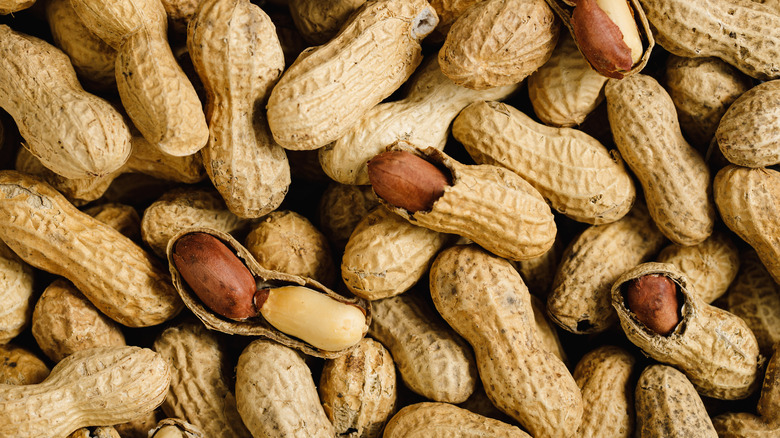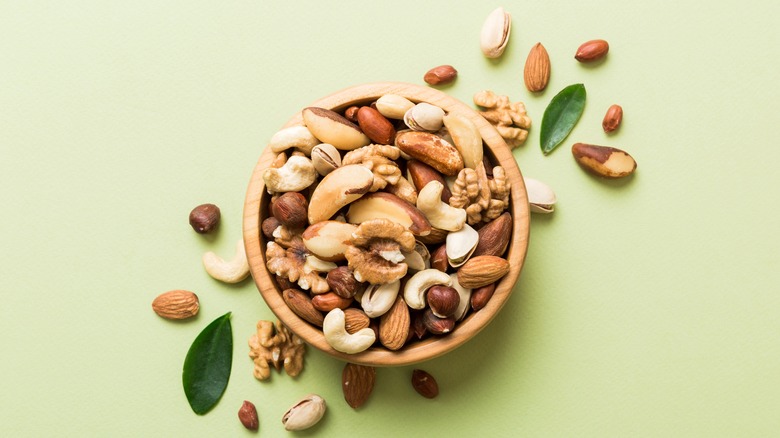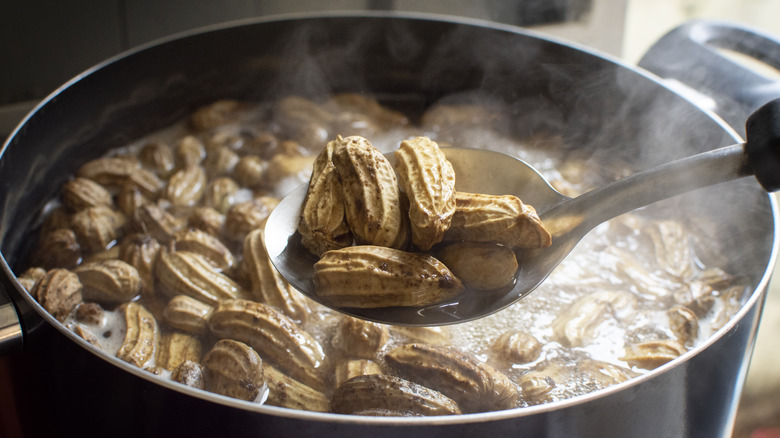Wait, Are Peanuts Beans, Not Nuts?
As a popular food item found in everything from sweet or spicy peanut butter and jelly sandwiches to chocolate peanut butter cups, peanuts are something you might take for granted and never question. Which is why you might be surprised to learn that their name is something of a misnomer — this common snack isn't a nut at all, but rather a type of legume.
Legumes, which are members of the Fabaceae plant family, are fruiting plants that are harvested for their seeds, which grow inside pods and are often nutrient-dense and very tasty. Some grow underground while others grow on shrubs or vines. Popular legumes include what we would think of as beans: chickpeas, navy beans, pinto beans, black beans, and more. But this family also includes peas, lentils, soybeans, green beans, snap peas, and — you guessed it — peanuts. But though peanuts are related to beans, a subcategory of legumes, they are not technically beans.
Not all nuts are nuts
Most people would probably agree that while peanuts would be welcome in a bowl of walnuts or pistachios, a handful of lentils might not be so nice of a match. This is why, though peanuts share more in common with pinto beans than pine nuts on a botanical level, they are still considered to be nuts in the culinary world.
It is common for certain foods to be recategorized as other foods in the name of culinary common sense. Many plants that are botanically considered fruits are legally classified as vegetables, including cucumbers, zucchini, and tomatoes due to their nutritional profiles. Similarly, many types of nuts that we call and consume as such are not related to actual tree nuts. There are peanuts, of course, which are legumes. But there are also pistachios, almonds, and cashews, which are not nuts at all. Technically, they're drupes. Tree nuts, or "true nuts," including chestnuts and hazelnuts, are dried fruits — while drupes are the seeds of the fruits, which surround their hard shell before they are harvested.
You can use raw peanuts like beans
Though peanuts are not beans, they can actually be used similarly to how you would use beans in cooking. Like beans, they are soft when harvested, and then cured, dried, and roasted. But they don't have to be processed this way. Unripe green peanuts can be boiled to soften them and produce a starchy, toothsome texture similar to that of beans. Valencia, Runner, and Virginia Jumbo peanuts are all popular varieties for boiling.
You're most likely to find boiled peanuts as a popular Southern roadside dish where they are typically served hot and eaten on their own. But you can also blend them to make a dip similar to hummus. Boiled peanuts can also be added to chili in place of beans, and your dinner guests would be none the wiser! Unfortunately, the fresh raw peanuts required are much harder to find than dry, roasted peanuts, but you can buy canned boiled peanuts, typically still in their shells, to use in place of beans. Just make sure no one has a peanut allergy before you do the swap!



